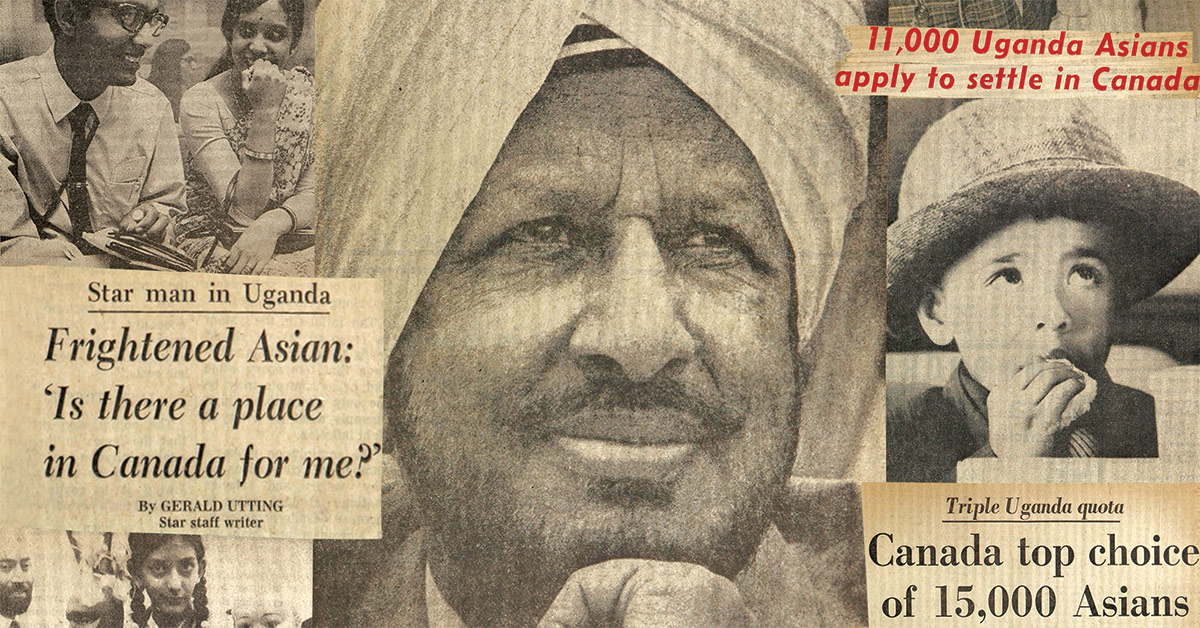Written by Shezan Muhammedi
On August 4, 1972, the President of Uganda, General Idi Amin, declared that there was no place for the “over eighty thousand Asians holding British passports who were sabotaging Uganda’s economy and encouraging corruption.” He gave all Ugandans of South-Asian descent only ninety days to leave the country, creating an international humanitarian crisis.
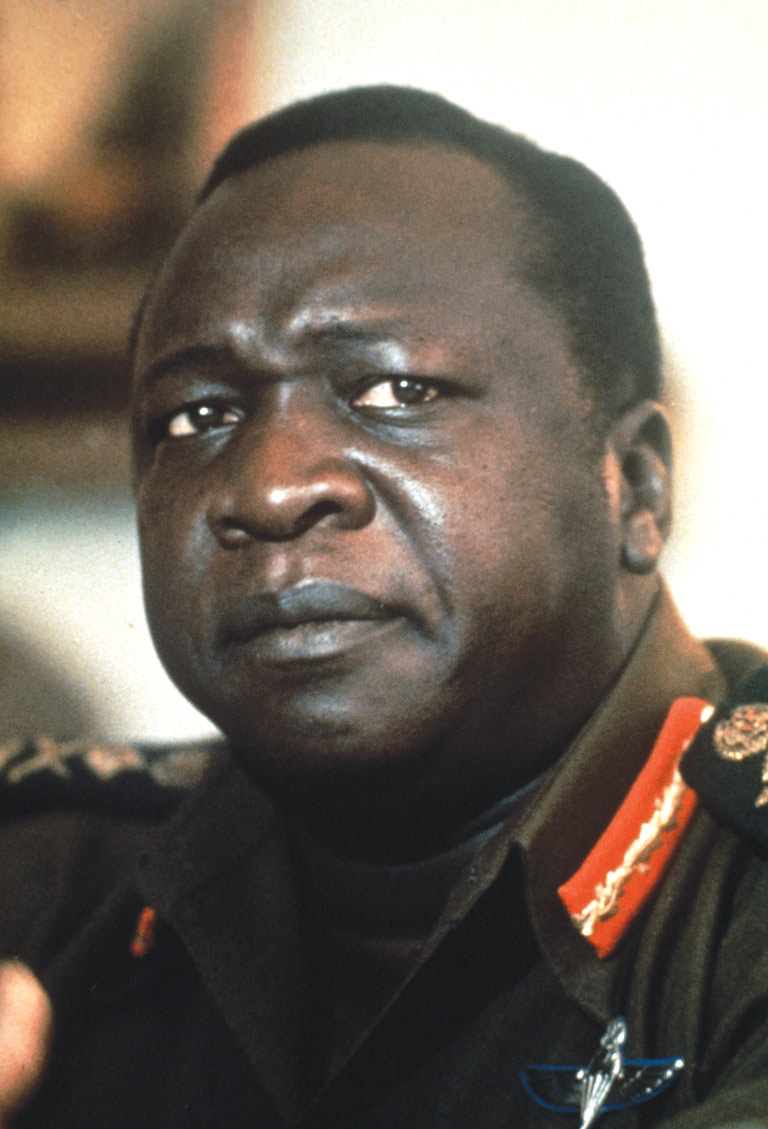
ASSOCIATED PRESS.
The expulsion decree was part of a larger campaign in which Amin’s regime carried out acts of mass violence against hundreds of thousands of Ugandans, regardless of their ethnicity, religion, political affiliation, or economic situation, and in which an estimated two hundred thousand to five hundred thousand Ugandans were murdered. Amin argued that Ugandan Asians, especially those with British passports, were “Britain’s problem.” While the British government admitted nearly twenty-nine thousand Ugandan-Asian refugees, Britain immediately called upon the Commonwealth for aid. Within days, the Canadian government answered the call and became, after the UK, the single largest recipient of Ugandan Asians who had been rendered stateless by Amin’s decree.
Under that decree, my mother and her family came to Canada in the fall of 1972 along with 7,550 other Ugandan-Asian refugees who were resettled across the country between 1972 and 1974. Their admission to Canada under the Liberal government of Prime Minister Pierre Elliot Trudeau marked Canada’s largest resettlement of non-European refugees after the Second World War, and preceded the creation of a formal refugee policy in 1976. As part of a doctoral dissertation at the University of Western Ontario, I was fortunate to interview more than fifty Ugandan-Asian refugees in Canada who are quoted throughout this article. This year, we commemorate the fiftieth anniversary of the expulsion order. It’s a major milestone in Canadian immigration history and an excellent opportunity to revisit a largely untold story within our diverse and multicultural history. By recapturing the voices of these displaced people, we can begin to understand how — as the Ugandan-Asian refugee Aziz Fakirani recalled — “even the Canadian government, even the people, they really helped us to be what we are.”
South Asians have a long history in East Africa, with some accounts dating as far back as the second century. Indian merchants participated in a vibrant trading network in the Indian Ocean and on the Arabian Peninsula, offering items such as cotton cloth, beads, and sundry manufactured goods in exchange for ivory, gold, incense, and slaves. The African slave trade was so rampant that by the fifteenth century the King of Bengal, in northeast India, possessed eight thousand African slaves.
Migration from the Indian subcontinent to East Africa increased significantly after the 1840s, coinciding with the expansion of British colonialism. In 1894, the area that is now Uganda became a protectorate of the British Empire. With British protection extended to all Indians, individuals made the choice to move to other colonies within the Empire because of deteriorating access to arable land, food, and employment opportunities in the Indian subcontinent. There were three major categories of South-Asian migrants: merchants and traders; civil servants; and indentured labourers who arrived between 1896 and 1901 to build the Uganda Railway.
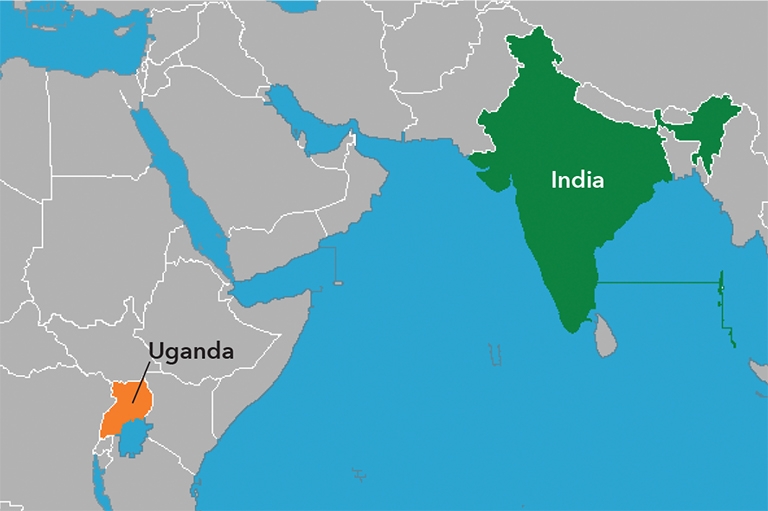
WIKIMEDIA/ASHWIN147
The majority of South Asians came from the northern regions of India, including Gujarat and Punjab, and from the former Portuguese colony of Goa in the southwest of India. Initially, South-Asian merchants who migrated to Uganda set up small shops, or dukhas, in which they sold modest quantities of exotic consumer goods to farmers and, in return, purchased food items. The success of the dukhawallahs, as these shopkeepers were known in Uganda, created resentment among Ugandan Africans, who criticized them as self-interested, corrupt, obsessed with turning a profit, and unpatriotic. Over time, the dominance of South Asians in the retail trade diminished in the face of competition from Ugandan Africans. Starting in the 1900s, many Ugandan Asians moved into the rising wholesale and manufacturing sectors.
Besides the dukhawallahs, government officials from Goa were brought to Uganda to replicate bureaucratic systems of colonial rule established in India. Finally, thirty-two thousand Indian workers were recruited to build railways in Uganda and Kenya. Of those workers, 6,742 decided to stay in East Africa after the completion of the railway system. The labourers who chose to remain in East Africa, as well as their descendants, were later branded by Amin as those “who forgot to go home.”
As the community grew, Ugandan Asians sent word back home of the numerous opportunities available in East Africa, thereby encouraging further migration. The number of Ugandan Asians rose from 5,604 in 1921 to 77,400 in 1961. Following the First World War, many Ugandan Asians embraced life in East Africa by developing increased levels of fluency in Swahili. They viewed East Africa as their permanent home and began to live in smaller towns. Many members of the Ugandan-Asian community engaged in small-scale philanthropic and humanitarian efforts with their African labourers. Historian Phillip Gregory found that many Ugandan Asians developed close relationships with Ugandan Africans and often subsidized their school fees.

MIGRATION MUSEUM
On the other hand, British imperialism, along with divide-and-conquer strategies implemented by the British government, enticed Ugandan Asians to segregate themselves from the local Ugandan-African populations. The “colonial sandwich” that placed white colonialists at the top, brown merchants and civil servants in the middle, and labouring Black Africans at the bottom legitimized racial segregation within all facets of Ugandan society. The ability of Ugandan Africans to participate in the import-export trade was purposefully repressed by the colonial government as a means of solidifying class divisions. Ugandan Asians benefitted from the colonial system. The civil servants quashed grievances from Ugandan Africans at a bureaucratic level, while the merchants continued to exploit labourers in manufacturing and agricultural businesses.
“Some of the things we did there was wrong. We treated them [Ugandan Africans] very bad,” said one Ugandan-Asian refugee, who wished not to be named. “I’ve seen people finish eating food, and what is left over they were giving to their houseboys. Everybody did that, and everybody is denying it!” These tensions led to the widespread belief: He is rich because he is an Asian and I am poor because I am an African.
Uganda gained its independence from Britain in 1962, but the existing structure of society persisted. By the early 1970s, Ugandan Asians controlled an estimated eighty to ninety per cent of Ugandan trade and owned nearly eighty per cent of commercial businesses. The resentment this generated extended throughout East Africa in the twentieth century and was used by various newly independent governments as a means of justifying discriminatory policies towards their countries’ South-Asian communities. It served as one of the most convincing justifications for Amin’s expulsion decree.
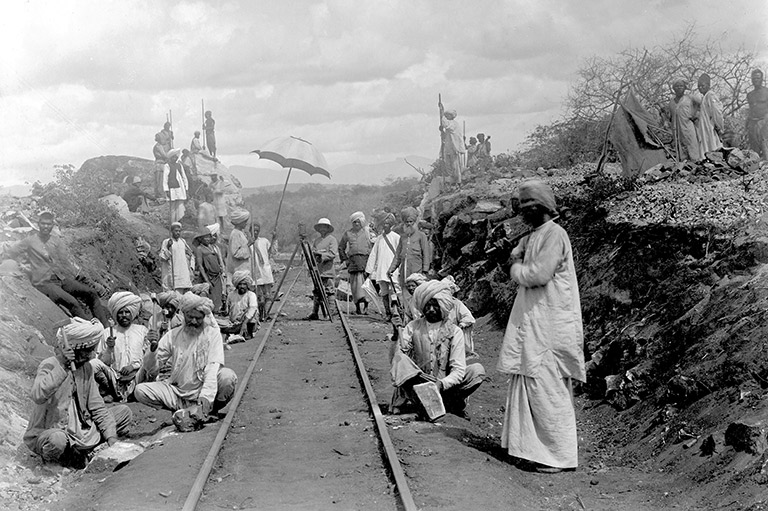
THE NATIONAL ARCHIVES (UK), PART OF CO 1069/185
Amin’s expulsion decree became official on August 9, 1972. With it, the president declared that all Ugandans of South-Asian descent had ninety days to leave the country, or else they would be “sitting on fire.” Ugandan Asians were confused when they first heard the announcement. Errol Francis recalled how “everybody laughed because, you know, they thought: This is a joke. How can you expel your own citizens? … So anyways, we thought, this is nonsense.” Mobina Jaffer remembered how, at her sister’s wedding in August 1972, “we all laughed, we didn’t take it seriously…. ‘Ha, ha, ha, he wants us out. What next? Ha, ha.’” Over the next thirty days, Amin’s government created further confusion by releasing numerous conflicting amendments and exemptions outlining a select few who could remain after the deadline. Amin Visram described how a Ugandan immigration officer turned down his family: “[He] said, ‘Give me your passports,’ and while we were watching him, he threw them in the garbage.” Nearly eight thousand Ugandan Asians were rendered stateless during the verification process, even if they were Ugandan citizens. To add to the general confusion, Amin’s cited figure of eighty thousand Ugandan Asians in the country was incorrect. Scholars place the real number closer to fifty thousand.
The challenge for Ugandan Asians pertained to their citizenship. Those who had retained British, Indian, or Pakistani citizenship following Ugandan independence were eligible to be resettled in their countries of citizenship. However, all those who had opted for Ugandan citizenship now had their citizenship revoked and were rendered stateless by Amin’s regime.
When Amin announced the expulsion decree, Britain immediately called for aid from the Commonwealth community to take in refugees. At the time, the United Kingdom was facing increasing challenges with race relations. Prime Minister Edward Heath had been elected in 1970 based on an anti-immigration platform, as thousands of people had recently immigrated from former British colonies including Kenya, Tanzania, and Zanzibar following decolonization and successful independence movements. Another request for help came directly to Prime Minister Trudeau from Prince Shah Karim al-Husayni, Aga Khan IV, the spiritual leader of the Shia Nizari Ismaili Muslim community. Many Ismailis in Uganda were directly affected by the order, and the Aga Khan asked Trudeau, his close personal friend, to provide a safe haven for his community.
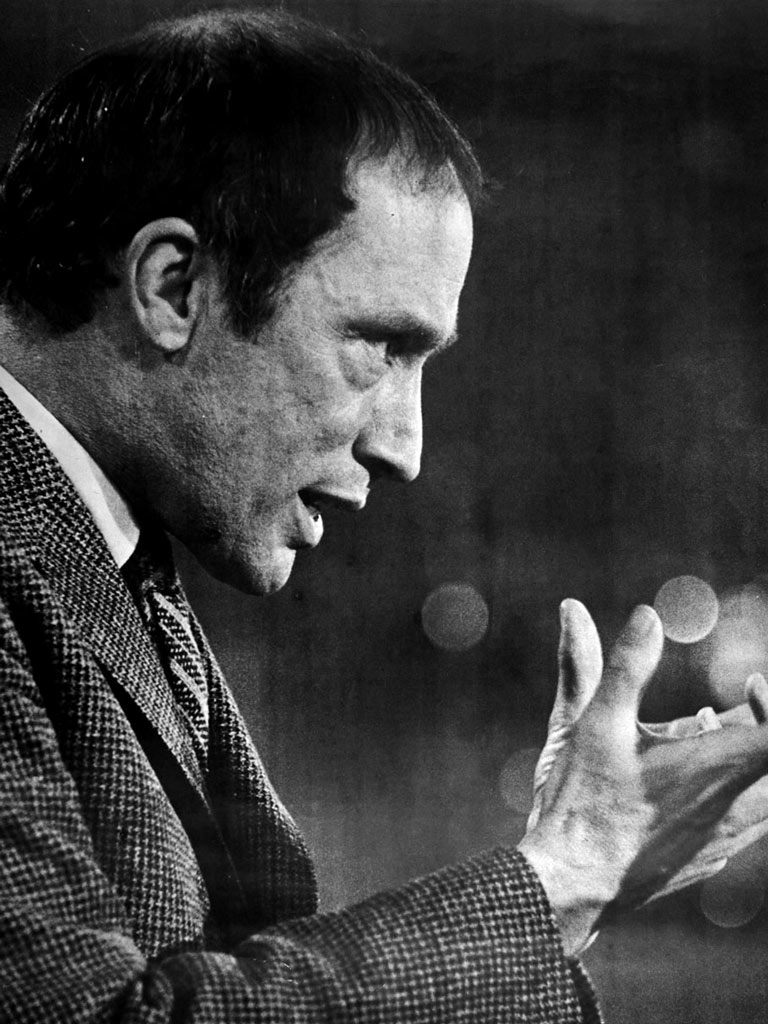
LIBRARY AND ARCHIVES CANADA / R11473-10, C-151886
Two memoranda to cabinet identified Canada’s motivations for responding to these requests, which demonstrated a balance between humanitarianism and opportunism. The memoranda outlined that, in addition to responding positively to Britain’s call for help, resettling Ugandan Asians would demonstrate Canada’s humanitarian commitment as a recent signatory of the 1969 United Nations Convention and Protocol Relating to the Status of Refugees; showcase Canada’s concern for the expellees; capitalize on the supply of entrepreneurs and professionals; and “ensure that those expelled Asians who might best contribute positively to the Canadian economy and culture are admitted to Canada.” The cabinet ministers and other government officials were well aware that Ugandan-Asian expellees tended to be well-educated, highly skilled, and savvy businesspersons. On August 24, 1972, Trudeau announced that a team of immigration officials would be sent to the Ugandan capital of Kampala to evaluate the situation and said that “for our part we are prepared to offer an honourable place in Canadian life to those Ugandan Asians who come to Canada under this program.”
Roger St. Vincent arrived in Kampala on August 31 as the lead immigration officer to oversee operations on the ground. Using a small team of clerks, immigration officers, and military doctors, St. Vincent set up a Canadian immigration office that officially opened on September 6 at 7:30 a.m. According to St. Vincent’s memoir, expellees had been in line since 4:00 a.m.
For Ugandan Asians the ninety-day expulsion period was traumatizing, as they navigated various bureaucratic hurdles to seek refuge and faced increasing hostility from Amin’s soldiers. “It’s amazing that they shot an Ismaili neighbour of mine,” Zulfikar Devji recalled, “shot him right in front of me.” Amin Visram recalled that, in September and October as the expulsion deadline approached, people in the Ugandan-Asian community “were starting to get very nervous. Military people were going into different homes, they knew people were leaving, raping women … stealing their luggage.” Nimira Charania recounted how military officials raided her family home: “They took my brother and my father to some place, and out of sheer luck my brother happened to notice somebody else who was driving by and asked for help, and they snuck away into that car. But otherwise, God knows what they would have done.”
At the Canadian immigration office in Kampala, officials followed standard procedures when assessing applicants, including completing applications, interviewing individuals, and conducting medical examinations. Manpower and Immigration officials considered the overall operation to be a success, leading to more than six thousand visas being issued. The process of leaving Uganda was harrowing: Expellees were allowed to leave the country with only one suitcase of personal belongings each and the equivalent of $143 per household. They often had their personal items confiscated at the numerous checkpoints that had been installed on the main roads to Kampala, and they were routinely strip-searched at the Entebbe International Airport. Still, by November 8, the expulsion deadline, 4,420 Ugandan Asian expellees had arrived on Canadian soil via chartered aircraft, 204 had travelled independently, and another 1,735 who wished to make their own travel arrangements had been granted visas.
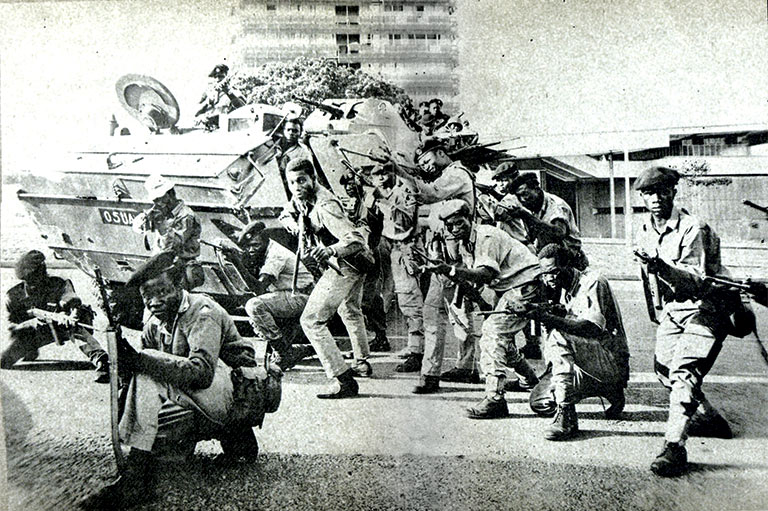
BENNETT COLLECTION, CARLETON UNIVERSITY
The first charter flight from Entebbe International Airport, outside Kampala, to Montreal’s Dorval International Airport landed on September 28, 1972. Refugees were taken to the nearby Canadian Forces Base Longue- Pointe for a meal, some rest, and further processing on the following day. Many refugees remembered the reception at the military base as a warm welcome, and they particularly commented on the food. The head military chef had received training from a local Indian restaurant. “You know, I cried when I saw the Indian curry, chicken curry, and pilau being cooked for us,” Ishad Razack recalled. “I said, ‘There are people, and then there are people.’” Refugees went through the agricultural and immigration clearance interviews with Manpower counsellors, received allowances of pocket money, and were offered winter clothing.
Interviews were integral to placing refugees in areas that matched their occupational skills and in attempting to reconnect them with family members who had arrived earlier. Azim Sarangi recalled how his family was able to reunite with his sister in St. Albert, Alberta, just west of Edmonton: “They were asking where we should go, where we wanted to go…. If you had family, or if you had the means, then the government would say, okay, we will get you there, and then you are on your own.”
Canada had answered the call for aid amid numerous developments at home: the Cold War contest between capitalism and communism; a reformulation of Canadian identity after the Royal Commission on Bilingualism and Biculturalism; high rates of unemployment; and the official deracialization of Canadian immigration policy, which had previously favoured white immigrants. All of this formed the backdrop for the arrival of nearly eight thousand Ugandan Asian refugees by the end of 1974.
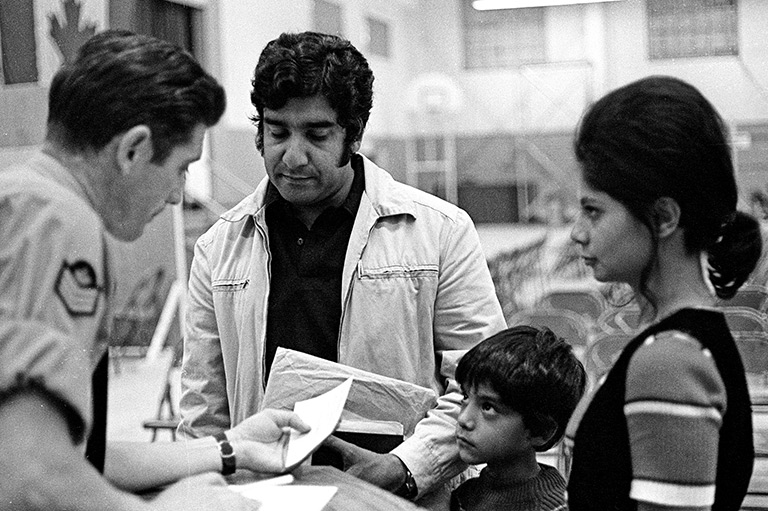
To support the resettlement process, twelve Ugandan- Asian committees were formed in Halifax, Montreal, Ottawa, Toronto, Hamilton, Windsor, Sarnia, Winnipeg, Regina, Edmonton, Calgary, and Vancouver. They were composed of members of local volunteer organizations and religious and ethnic communities as well as civil servants from all levels of government. They served as prominent social hubs for refugees to meet with government officials and with Canadians who wished to lend a helping hand. They also helped the newcomers to connect with other refugees and discuss their early experiences of life in Canada. The committees also aimed to combat criticism from the Canadian public pertaining to high unemployment rates and concerns over integration. Committees were designed to support refugees with access to the job market, to assist in locating suitable housing, and to organize orientation activities. The committees and Canada Manpower Centres were incredibly successful in finding employment opportunities for Ugandan-Asian refugees. By March 9, 1973, they had helped 2,041 refugees who had arrived on charter flights secure employment, while 308 refugees were participating in a Canada Manpower training program.
Settling in Canada was not a linear process. At times Canadians offered the refugees a warm welcome. Shiraz Lalani recalled how the Friends of Uganda Refugees (FOUR), established by faculty members at the University of Waterloo, hosted him when he arrived. Lalani remembered the Manpower counsellor telling him, “‘You are going to stay with one of the professors. He has invited you to his house, and he is going to take care of you and get you on your feet.’ … That was amazing that they would do this.” Terrence Francis was offered accommodations for his entire family of four in Thornhill, Ontario: “They took us to the basement, and it was all done up. He said, ‘Listen, you are here as our guests. This house is your house, this is where you can sleep, you can go anywhere in the house you want, and what we have is yours.’ … They were just unbelievably wonderful people.”
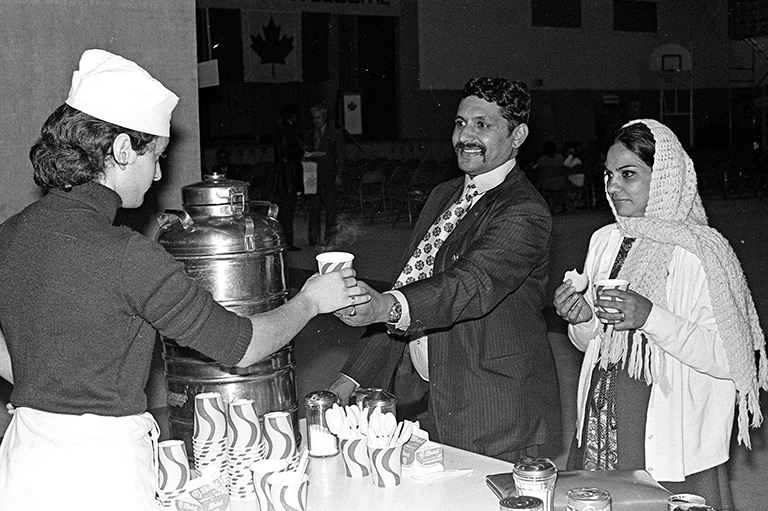
https://www.canadashistory.ca/CNHS/media/CNHS/cnhs-media/Images/Explore/ExpSetSittingOnFireRefugeesTea768x511.jpg
Having tea at Canadian Forces Base Longue-Pointe in Montreal in October 1972.
However, other refugees endured racial discrimination and prejudice upon resettlement. While government documents paint a rosy picture of employment outcomes for Ugandan-Asian refugees, many were underemployed and were expected to demonstrate Canadian experience. Jalal Jaffer epitomized the reality for many refugees, as his foreign credentials as a lawyer were not recognized and he lacked Canadian work experience: “Coming here was not a pleasant experience at first, as you know, to come here to get any kind of job you need Canadian experience…. What is Canadian experience? I mean, if you’re a lawyer, a secretary, or whatever, you have experience. So it was tough to get a job. But the more devastating thing for me was they wouldn’t accept my qualifications.” Others had applied to positions that were on par with their skills and expertise but, upon arrival at an interview, were offered only an entry-level position. Vinnay Datani recalled applying for an engineering position at Canadian Pacific Railway and being offered a position of labourer. When he questioned the interviewer, he said he was told, “you can apply for the CEO position, but I have a job that is a labourer job.… If you want, take it. If you don’t want it, I’ve got somebody else on the list.”
Beyond employment discrimination, refugees encountered mixed reactions from the public. In St. Catharines, Ontario, Karim Nanji was made fun of at school. “I was the only brown person in my class,” he said. “My name was Karim, so people thought that ‘cream in my coffee’ would be a better name to call me. So they would constantly tease me about that. They would call me chocolate milk.” For Amin Visram, bullying escalated into a fist fight when a classmate confronted him and his friend, punching his friend while yelling a racist obscenity at both of them. “I grabbed this guy, and I just went nuts. I started punching him,” Visram recalled.
My mother, Shamim Muhammedi, remembered how a new manager at her job explicitly told her that he would have dated her if she had been white: “He would say, you know, ‘You are so pretty. It’s too bad you’re brown, you are not white. I wish you were white, because I would love to take you out.’” While many refugees who participated in oral-history interviews noted how prejudice and racism dissipated over time, it was still a significant element in their first years of settlement in Canada.
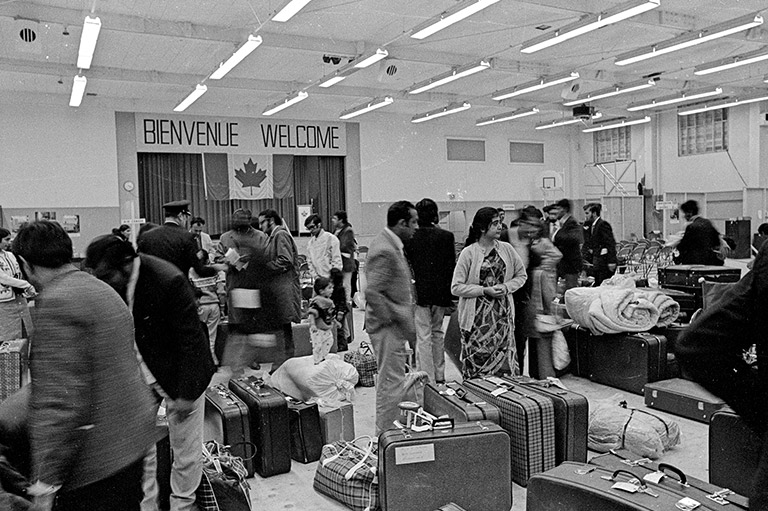
LIBRARY AND ARCHIVES CANADA / E011052358
Over the years, refugees began to put down roots and to create new homes in Canada. While identity formation is constantly in flux and continuously evolving, all the Ugandan-Asian refugees I interviewed identified themselves as Canadians. While some had hyphenated identities — such as Ugandan-Asian-Canadians, Ismaili-Canadians, or Goan-Canadians — and others simply considered themselves Canadian, they all defined themselves as having an attachment to the country. Aminmohamed Jamal, for example, stated: “I am Canadian … one hundred per cent. I believe in the values of Canada.” Similarly, the late John Halani noted that his identity was simple: “We are citizens of this country, so our loyalty is to Canada, and we play our role in the day-to-day affairs of this country.”
Zaina Sovani described how her identity is in constant flux between Canadian and Ugandan, “a mixture of all, it’s a mélange of the two.” John Nazareth saw himself as embodying numerous affiliations that accentuate his historical roots: “I am a Canadian, a Ugandan, an African, an Indian, and a Goan … and I embrace all of them. They are all part of [my] psyche, and when I am with Ugandan Africans something almost goes click in my brain, and I joke like a Ugandan.”
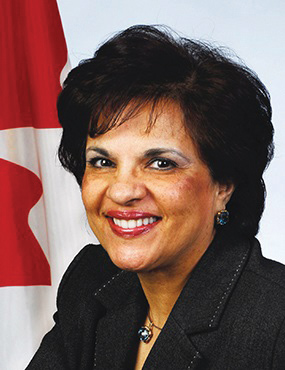
Regardless of their expressions of identity, possession of Canadian citizenship, and nearly fifty years of living in Canada, Ugandan Asians still face numerous questions about their ethnic and racial backgrounds. Errol Francis remarked, “If you answer ‘Where are you from?’ with ‘I’m Canadian,’ people … don’t accept that as an answer, right? That unfortunately will last for the next umpteen generations … because people associate if you are Canadian you have to be Caucasian, right? I mean, that’s how it will always be, because they want to know your ancestry, and they want to know where you actually come from.” Errol’s remarks were echoed by many Ugandan-Asian refugees and embody how integration is an endless process for many immigrant communities, particularly for people of colour.
As we reflect on the fiftieth anniversary of their expulsion, Ugandan-Asian refugees continue to share their oral histories as part of the Uganda Collection at Carleton University. They hope to capture their lived experiences for future generations and have emphasized to me the importance of sharing their historical roots in East Africa and South Asia with their children and grandchildren. Over the years, Ugandan-Asian refugees have made innumerable contributions to Canadian society. Mobina Jaffer, who laughed about the expulsion at her sister’s wedding, became a Canadian senator. Zulfikar Devji, who saw his neighbour in Uganda shot before his eyes, has been a member of the Rotary Club since 1977. “[What] makes you Canadian?” he reflected. “It’s just all the values, and you participate in Easter Seals campaigns…. Yeah, when you become part of this you feel Canadian.”
To mark the fiftieth anniversary, Ugandan-Asian refugees Pyarali and Gulshan Nanji — who were resettled in Toronto, where they became successful entrepreneurs — donated one million dollars to the Office of the United Nations High Commission for Refugees to facilitate scholarships for refugee students to attend university. As warfare, climate change, and wealth inequalities continue to displace increasing numbers of people around the globe, the example of the Uganda-Asian expellees reminds us that, with the support of the government and the Canadian people, all refugee communities can be gifts that enrich our country.
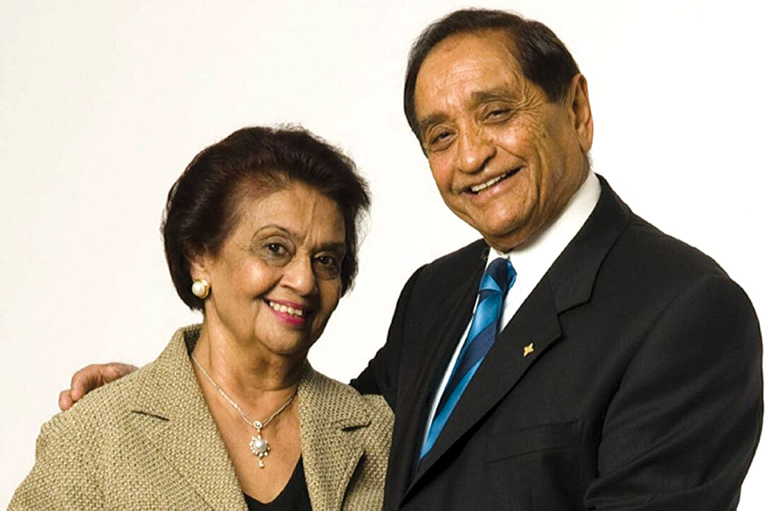
COURTESY OF SHEZAN MUHAMMEDI
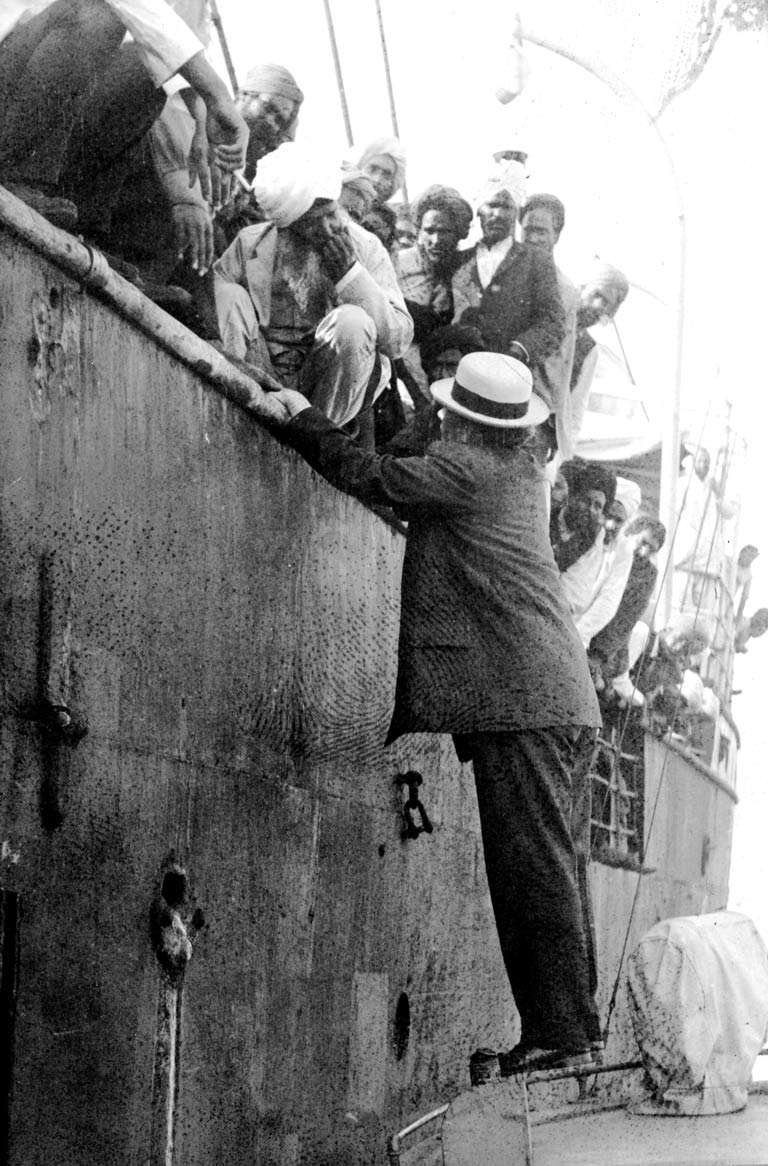
CITY OF VANCOUVER ARCHIVES, AM69-F18-: CVA 141-1
Komagata Maru: Symbol of Inequality
Unlike in 1972, Canada in the early twentieth century did not welcome South-Asian immigrants. In 1914 Punjabi businessman Gurdit Singh chartered the ship Komagata Maru in an effort to challenge Canada’s exclusionary immigration policy. He recruited 376 Indians from the Punjabi region to sail to Canada seeking immigration. The ship left Hong Kong on April 4 and anchored in Vancouver’s Coal Harbour on May 23. A standoff with immigration officers ensued, leading to a court case at the British Columbia Court of Appeal, which ruled in favour of the Canadian government. Only twenty-one passengers, mostly returning residents, were allowed entry into the country. The remaining 355 passengers departed on the Komagata Maru on July 23. The incident became a symbol of the inequity toward non-white citizens of the British Empire and played a role in the Indian liberation movement. On May 19, 2016, Prime Minister Justin Trudeau officially apologized for the incident. — Kate Jaimet
____________________________________________________________________________
 Shezan Muhammedi holds a Ph.D. in history and migration and ethnic relations from the University of Western Ontario. His book Gifts from Amin: Ugandan Asian Refugees in Canada was published by the University of Manitoba Press in September 2022.
Shezan Muhammedi holds a Ph.D. in history and migration and ethnic relations from the University of Western Ontario. His book Gifts from Amin: Ugandan Asian Refugees in Canada was published by the University of Manitoba Press in September 2022.
This article originally appeared in the August-September 2022 of Canada’s History. Exclusive offer for readers of New Canadian Media – subscribe to Canada’s History magazine and you could save over 57% off the cover price!


